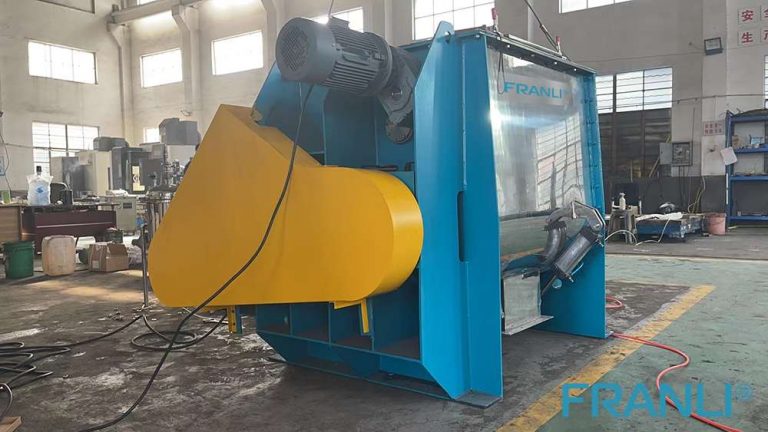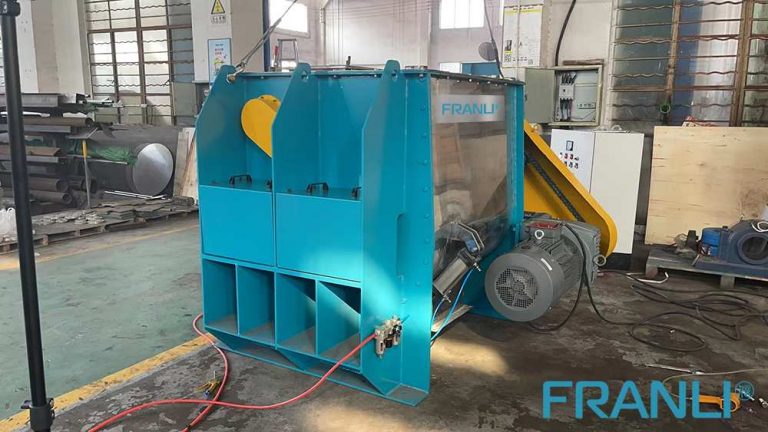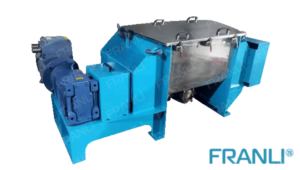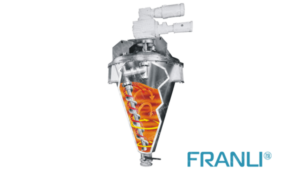Home » The Ribbon Blender: A Versatile Solution for Powder Mixing
The Ribbon Blender: A Versatile Solution for Powder Mixing
Ribbon Blender
Horizontal Ribbon Mixers, also known as horizontal ribbon blenders, are versatile and robust machines designed for the thorough mixing of dry materials. They consist of a horizontal trough with a set of inner and outer helical ribbons that rotate on a common shaft. The ribbons move the materials in opposite directions, creating a fluidized mixing zone and ensuring a consistent blend.
Advantages of Ribbon Blender
- fast and efficient
- safe and stable
Application: chemical, pesticide, dye, medicine, feed, fertilizer, metallurgy, mining, food, plastic, additives, and other industries.
How Horizontal Ribbon Mixers Work
The working principle of Horizontal Ribbon Mixers is based on the combination of convective and diffusive mixing. As the ribbons rotate, they lift the materials from the bottom of the trough to the top, creating a cascading effect. This movement ensures that every particle comes into contact with the ribbons and other particles, resulting in efficient and homogeneous mixing.

Advantages of Horizontal Ribbon Mixers
1. Efficient Mixing: Horizontal Ribbon Mixers offer efficient and rapid mixing, reducing processing time and increasing productivity. The counter-current flow created by the rotating ribbons ensures that all particles are evenly mixed, eliminating the need for additional mixing cycles.
2. Homogeneous Blend: The unique design of Horizontal Ribbon Mixers ensures thorough mixing, resulting in a homogeneous blend. This is particularly important for applications where uniformity is critical, such as in the food, pharmaceutical, and chemical industries.
3. Versatility: Horizontal Ribbon Mixers are highly versatile and can handle a wide range of materials, including powders, granules, and pastes. They are suitable for various industries, including food processing, pharmaceutical manufacturing, and chemical production.
4. Gentle Mixing Action: Horizontal Ribbon Mixers provide gentle mixing, minimizing product degradation and preserving the integrity of sensitive materials. This is especially beneficial for fragile powders or those prone to degradation when subjected to excessive shear or impact forces.
5. Flexibility in Batch Sizes: Horizontal Ribbon Mixers can accommodate varying batch sizes, making them suitable for both small-scale and large-scale production. This flexibility allows manufacturers to adapt to changing production demands.
6. Easy to Clean and Maintain: Horizontal Ribbon Mixers are designed with ease of cleaning and maintenance in mind. The open design of the trough and ribbons allows for easy access, minimizing downtime and maximizing operational efficiency.

Key Considerations for Horizontal Ribbon Mixer Selection
1. Capacity and Batch Size: Determine the required capacity and batch size based on your production needs. Horizontal Ribbon Mixers are available in various sizes, allowing you to choose the one that best suits your requirements.
2. Material Compatibility: Consider the nature of the materials you will be mixing. Horizontal Ribbon Mixers are suitable for a wide range of dry materials, but certain materials may require specific modifications or additional features to ensure optimal mixing.
3. Construction Materials: Select a Horizontal Ribbon Mixer constructed from high-quality materials that are compatible with your application. Stainless steel is commonly used due to its durability, corrosion resistance, and ease of cleaning.
4. Safety Features: Ensure that the Horizontal Ribbon Mixer is equipped with safety features such as emergency stop buttons, safety guards, and interlocks to protect operators and prevent accidents.
Applications of Horizontal Ribbon Mixers
Horizontal Ribbon Mixers find applications in various industries, including:
1. Food Industry: Horizontal Ribbon Mixers are widely used for mixing ingredients in the food industry, including dry mixes, spices, seasonings, and bakery products.
2. Pharmaceutical Industry: Horizontal Ribbon Mixers play a crucial role in pharmaceutical manufacturing, ensuring uniform blending of active pharmaceutical ingredients (APIs), excipients, and other dry materials.
3. Chemical Industry: Horizontal Ribbon Mixers are utilized for mixing chemicals, pigments, fertilizers, and other powdered or granular substances in the chemical industry.
4. Construction Industry: Horizontal Ribbon Mixers are employed for blending construction materials such as cement, mortar, and dry mixtures.
Horizontal Ribbon Mixers have emerged as a reliable and efficient solution for achieving consistent and homogeneous mixing of dry materials. Their ability to provide efficient blending, gentle mixing action, and versatility make them an indispensable tool for manufacturers seeking to enhance product quality, increase productivity, and streamline their operations. With their proven track record and numerous advantages, Horizontal Ribbon Mixers have rightfully earned their place as a preferred choice for a wide range of mixing applications.
Welcome to send inquiry to us and let’s make a win win business together !
Guidelines For Ribbon blender
Ribbon blenders are essential equipment in various industries where the quality and consistency of the final product are critical factors. They are highly efficient, customizable, and reliable mixing solutions that offer unsurpassed performance and versatility. By integrating a ribbon blender into your production line, you can ensure consistent and reliable product quality, increased productivity, and reduced manufacturing costs.

Ribbon Blender Mixer Equipment
A ribbon blender mixer, also known as a ribbon mixer or horizontal ribbon blender, is a powerful industrial machine designed for thorough and efficient blending of various materials.

Ribbon Blender Mixer: The Right Choice for a High-Quality Blender
Ribbon blender mixers, also known as ribbon mixers or ribbon blenders, are horizontal mixing devices characterized by their unique ribbon-shaped agitators.

Vertical Ribbon Blender: Efficient mixing equipment for solids and powders
A vertical ribbon blender, also known as a vertical mixer, is a type of mixing machine widely used in various industries for the homogeneous blending of dry, free-flowing solids.

Powder Ribbon Mixer: Whirling Agitator and Horizontal U-shaped Housing
A powder ribbon mixer, also known as a ribbon blender, is a versatile and widely used machine for combining different powders, powder with liquid, powder with granules, and dry solids.

Small Ribbon Blender: A Versatile and Efficient Processing Equipment
The small ribbon blender is a versatile and efficient processing equipment used in the food, pharmaceutical, and cosmetic industries for blending, mixing, and uniformizing various types of materials.

What is A Small Ribbon Blender?
The small ribbon blender is a versatile and efficient machine used for the mixing of various materials such as powders, pastes, and dried granules.

